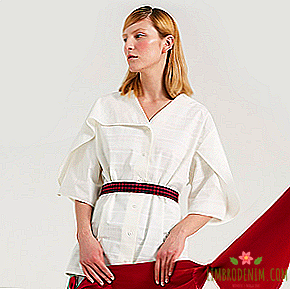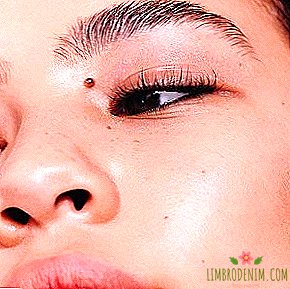From mourning to the Golden Globe: How black became the color of protest and solidarity

margarita virova
Golden Globe Award Ceremony,The last one on January 7 became a frankly political event: the awards leaving the most worthy films and representatives of the industry were paid far less attention than the action against sexual harassment and inequality. On that day, badges with the slogan "Time's Up" became a much more important attribute than the gilded statuette. An unprecedented unification was expressed, in particular, in the fact that almost all the guests and nominees came to the Beverly Hilton Hotel in black. We recall when the black color even became a statement and a symbol of the struggle in fashion, social movements and subcultures.
Mourning

In Western life, up to the beginning of the 20th century, there was little black: more often it was associated with a religious costume and the absence of color as such. After World War I, traditional mourning vestments became almost everyday clothes, and then became associated with large-scale social changes. Women began to go to work, live an active life outside the home and expectedly wear comfortable cut things made of modern materials. The color, which at first signified the decline and severity of the memories of the catastrophe, gradually absorbed new meanings: soon jazz lovers began to wear it, designers who had revolutionized fashion began to use it. Anyway, in the 20th century, black ceases to be neutral and becomes a symbol of strong, and sometimes extreme, statements and ideas.
Black flag

Among other things, throughout the 20th century, black became one of the main political colors. From the end of the 19th century, and until now, anarchists have been using it: the first representatives of the movement chose ink banners as an anti-flag, and the units of Nestor Makhno fought under them. The black flag, along with the red that was more familiar for revolutionary performances, was raised over the Paris Odeon cinema by students protesting in May 1968. Today, black flags appear sporadically in the protests of anti-fascists, anti-globalists and young cyber-activist movements.
Little black dress and the color of independence

Everybody knows or guesses the meaning of this wardrobe item that has turned into an eternal classic: in 1926, the outfit of Koko Chanel’s authorship became the embodiment of a new femininity. The idea grew again from the mourning ubiquitous at the beginning of the century: there is also a story in the dress legend that it was created in memory of the beloved who died. Grief with grief, but it was this thing that could be worn in different ways and on different occasions, became the clothing of bold and independent women - the place of the struggle was found in fashion.
Black leather jacket

The biker jacket, which can now be found in any mass market, was invented for motorcyclists in the 1920s and until the release of the film Savage with Marlon Brando in 1953, remained a utilitarian piece of clothing. Success secured and "Rebel Without a Cause" with the legendary James Dean, who passed away after three bright films - besides, the idol of the generation constantly wore a leather jacket and outside the set. Meanwhile, bikers turned into a powerful “hooligan” subculture, and representatives of the most diverse youth movements began to wear black leather jackets. The rebellious past of the leather jackets is not forgotten even after it has acquired a rich pop cultural history - it is unlikely to present it as an exceptionally practical and not loaded with the meanings of a piece of clothing.
Black clothes beatniks

The love of one of the most fruitful generations of American youth to black is often described in a few words: again, rebellion, denial, search. Still, black berets, turtlenecks and dark glasses also carried a complex message: “impenetrable” clothes were inspired by the ideas of existentialism, the popularity of color in the ranks of jazz musicians and the peculiar spiritual aura of the movement, whose members did not want to reckon with traditional values; they sought revelation, trying to dissociate themselves from prosperous America. For the first hipsters who were crazy about tramp Jack Kerouac, black clothes were also a way to get to know each other, and an opportunity to escape. The beatniks tried to live by focusing solely on inner experiences, not on the outside world.
Black Panther Uniforms

The radical movement of the '70s, which influenced American culture of protest, is much stronger than it seems at first glance, it has often been remembered again lately, mainly due to musicians who are trying to rethink a complex and sometimes contradictory legacy. Black Panther rhymes with the Black Lives Matter movement, struggling with the remnants of racism. The Panther had many demands on the society in which they lived: they defended the right of the African American population to protection from police brutality, accessible education, gender equality, their own cultural identity. The speeches of the party remained in the history of one of the most powerful anti-capitalist protests, and the sign style influenced fashion. Representatives of the movement wore uniforms of black leather jackets and berets, which beaten up military paraphernalia and again allowed radical activists to remain not too noticeable.
Ray Kawakubo black collection

Hopeless black tones firmly entrenched in the fashion of the 90s, not least thanks to the famous Comme des Garçons collection, shown in Paris in 1981. In the style of the 70s and 80s, hedonism, lightheadedness, glitter, feathers and other rainbows prevailed, so it is not surprising that Ray Kawakubo’s clothes with her “dull-like” forms and dark tones turned out to be revolutionary - and quite depressive to cause the first viewers to associate with post-apocalypse. Three decades later, black does not lose ground in an intellectual fashion that seeks to preach the attitude towards clothing as an art.
Black Protest in Poland
The Black Monday, which was announced on October 3rd in Warsaw, became the biggest female performance of 2016: Polish women came out to protest against the ban on abortions, the story of which had been painfully stretched since the 90s. The hashtag #czarnyprotest quickly spread on social networks, including those who could not take to the streets had the opportunity to participate in the action - they had to wear black. Thanks to the persistence of Polish women, who were supported by the majority of the country's population, a complete ban on abortions did not take place.
Golden Globe and Time's Up

The fact that many Hollywood actresses are planning to attend the Golden Globe award ceremony in black in protest against the abuse of power and gender inequality in the industry, became known in mid-December. Despite the fact that the action was not a surprise, it has already become the most resonant news of the beginning of the year.
Firstly, all the visitors of the event came in black dresses and suits, except for three people; the statement was not only color, but also the shape of the dresses. Many chose two-piece suits and closed dresses, but no one was going to cancel the cutouts and cleavage traditional for lush events: the era of slatsmaking is coming to an end, and frank and expressive dresses do not negate the seriousness of the statement.
Secondly, the case is not limited to outfits: a week before the event, the creation of a movement and a foundation called Time's Up, which will deal with legal protection and support for victims of sexual harassment, was announced. Not without embarrassing episodes: Immediately after the ceremony, the winner of the award for the best male role, James Franco, who demonstrated solidarity with the help of pinned to the lapel badge of the action, had to respond to allegations of harassment (which were previously known). And yet, it is obvious that a mass appearance in black clothes is rare for Hollywood, where it is not accepted to remove litter from the hut, an episode of open protest. Such decisiveness is already a serious indicator that people from the world of cinema no longer agree to live by the old rules.
Photo: Wikimedia Commons (1, 2, 3), Paramount Pictures, Stanley Kramer Productions, Comme des Garçons, Killer Films, Getty Images (1)




